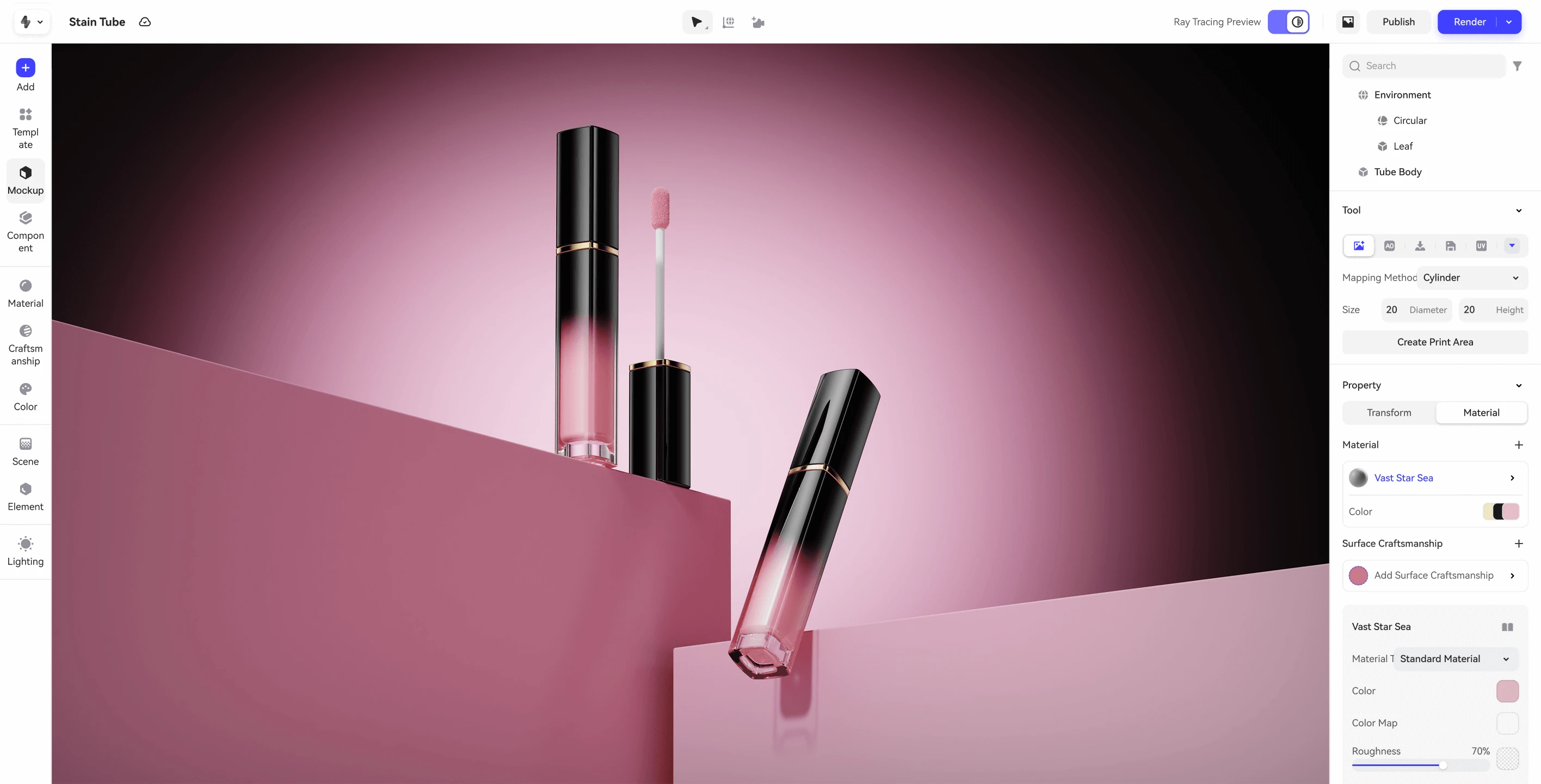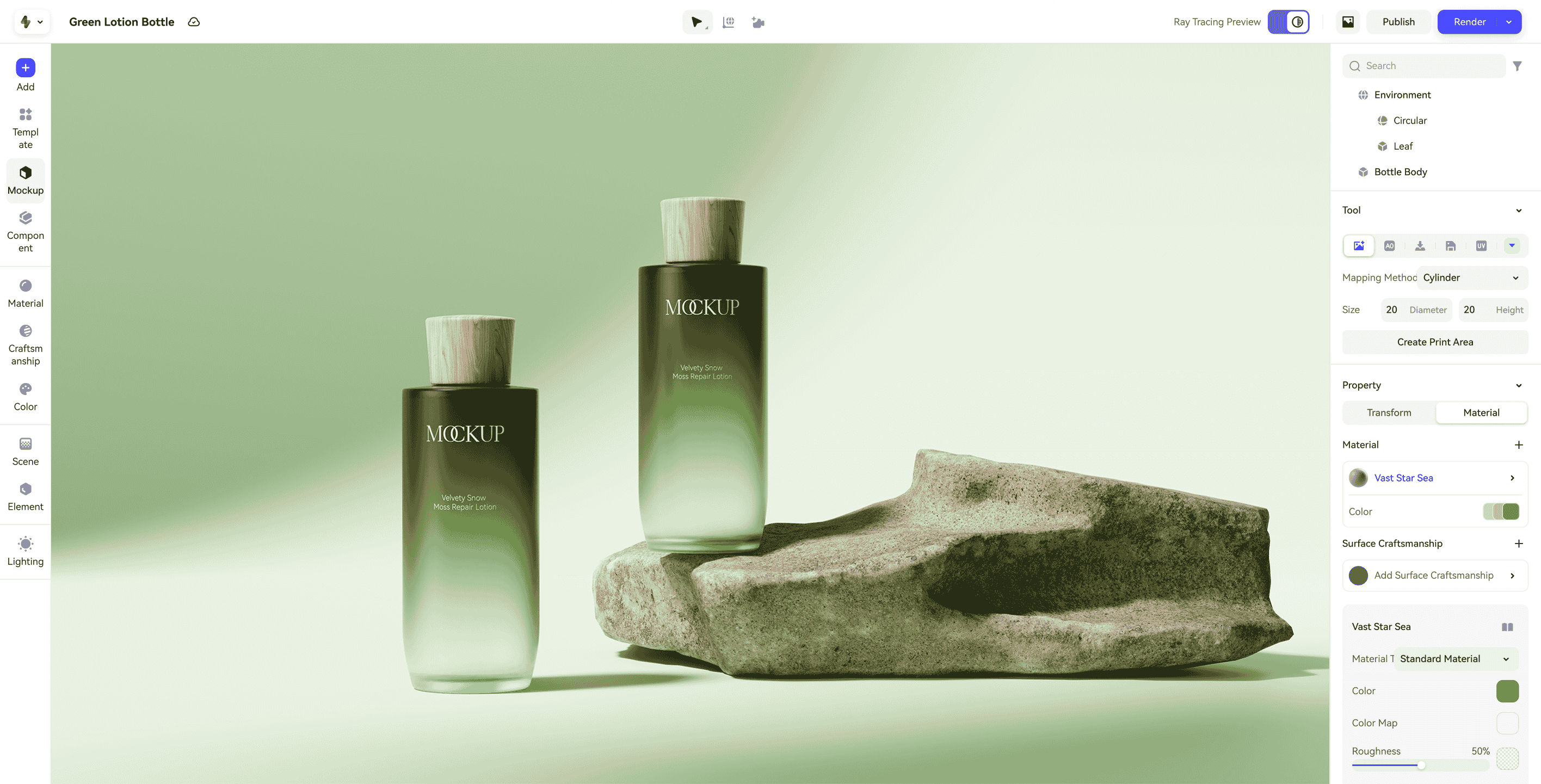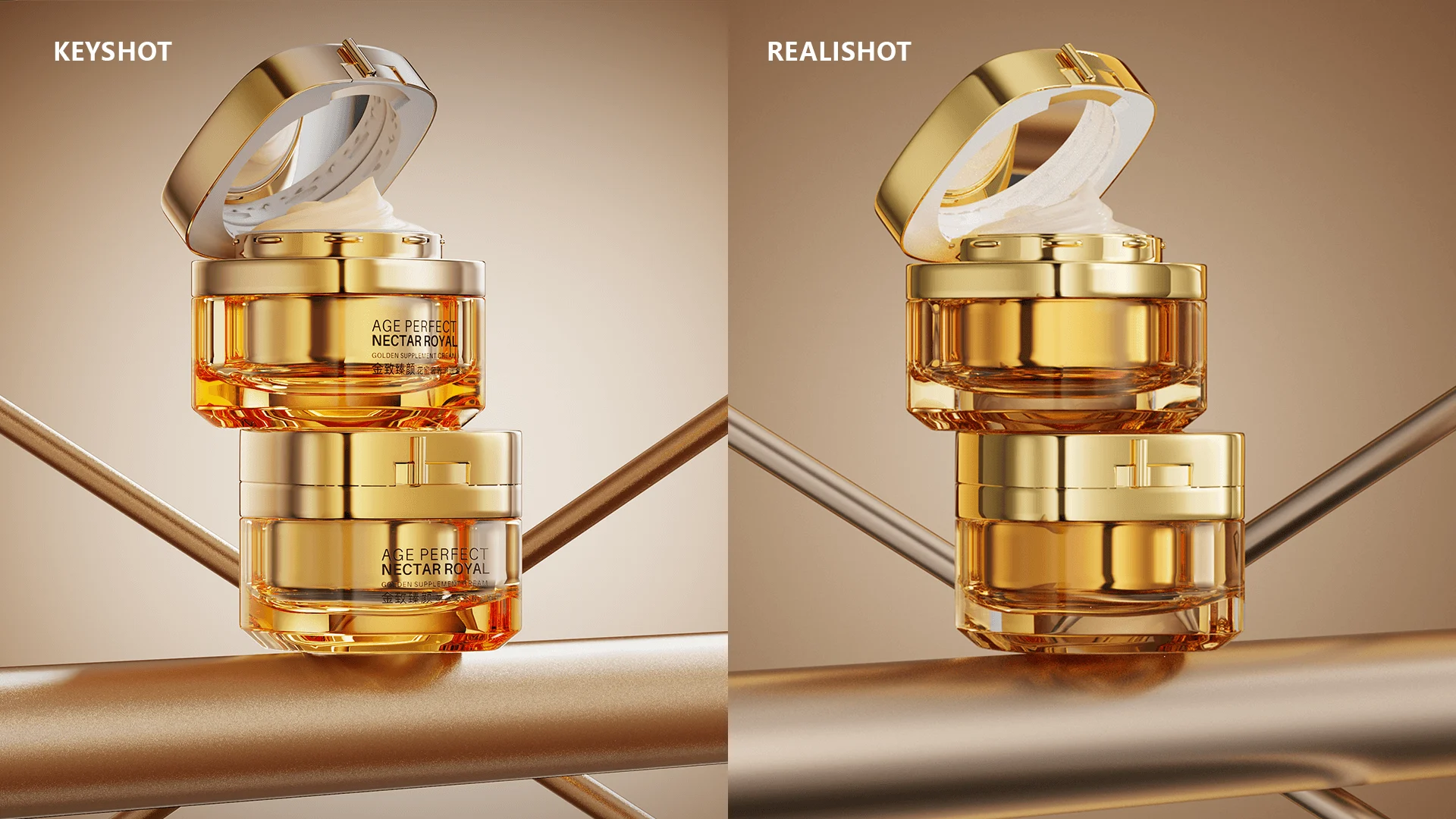Scroll through the website of any top direct-to-consumer brand. See that hero image? The one with the perfect lighting, the impossible angle, the flawless finish? I'll let you in on a secret: it’s almost certainly not a photograph.
You're looking at a product render.
In the simplest terms, product rendering is the art of creating a photorealistic image from a 3D model. Forget the hassle of a physical photoshoot. This is a virtual studio where you play by a different set of rules. Here, you have complete control. The lighting is always perfect, your product never has a speck of dust, and creating a dozen color variations doesn't require a single reshoot. It's a creative sandbox with an infinite undo button.
What was once a niche, eye-wateringly expensive luxury has become an absolute necessity for modern marketing. This guide will break down exactly what product rendering is, why it’s a genuine superpower for brands, and how you—even with zero design experience—can start using it today.
So, What is Product Rendering? Welcome to the Digital Photo Studio.
Imagine a world-class photo studio. Now, strip away the physical cameras, lights, and products, and move the entire process inside your computer. That, in a nutshell, is product rendering. It’s a specialized discipline within a broader field, which we explore in our guide, What is 3D Rendering?
You begin with a 3D model—a perfect digital replica of your product. From there, you become the art director and virtual photographer. You define the materials, arrange the lighting, and compose the perfect shot. The software then simulates the physics of light, calculating how every element interacts to produce a final image that is often indistinguishable from reality.
 A stunning product render of a cosmetic product, a perfect example of modern product rendering.
A stunning product render of a cosmetic product, a perfect example of modern product rendering.
The Business Superpowers: Why This Is No Longer Optional
Let's be clear: this isn't just about creating "pretty pictures." Integrating a product rendering workflow gives your business a set of profound, competitive advantages.
Launch Products Before They Even Exist
This is the paradigm shift. With product rendering, you can generate an entire suite of marketing assets before a single physical unit has rolled off the assembly line. While your competitors are stuck waiting for prototypes to arrive for their photoshoot, you can be launching ad campaigns, building your e-commerce listings, and capturing pre-orders. It fundamentally rewrites your go-to-market timeline.
Achieve God-Tier Brand Consistency
Traditional photography is messy. Lighting conditions shift, different photographers have different styles, and physical products have imperfections. Product rendering eradicates these variables. You can create visuals for a twenty-product collection with the exact same lighting, camera angles, and branding, every single time. This level of consistency signals a professional, premium brand.
Unlock Boundless Creative Freedom (and Zero Reshoots)
Need your new sneaker in ten colorways? How about a lifestyle shot on a concrete background and a pure white version for Amazon? With photography, each variation is a new, expensive setup. With rendering, they are literally just a few clicks. From a single 3D model, you can generate an entire library of visual assets—cutaways, animations, 360-degree spinners—without ever booking another studio day.
Slash Your Creative Costs
Let's talk numbers. A professional, multi-day photoshoot for a product line can easily run into the tens of thousands of dollars. Creating that same, or even a more extensive, set of assets through 3D rendering can be done at a fraction of the cost. The return on investment isn't just significant; it's transformative.
Deconstructing the Magic: From 3D Model to Hero Shot
While it might sound technical, the process is built on a familiar creative foundation. It's the same journey we detail in our guide on How to Make 3D Renders of Products.
 The Digital Twin (The Model): Everything begins with a 3D model. This is the digital blueprint of your product, typically created by an industrial designer or a CAD professional.
The Digital Twin (The Model): Everything begins with a 3D model. This is the digital blueprint of your product, typically created by an industrial designer or a CAD professional. The Digital Stylist (Materials & Labels): This is where you breathe life into the model. You apply digital materials to define its surfaces—is it glossy plastic, brushed steel, or frosted glass? For consumer goods, this is also where you apply your 2D label designs, a critical step we cover in our guide to 3D rendering software for packaging design.
The Digital Stylist (Materials & Labels): This is where you breathe life into the model. You apply digital materials to define its surfaces—is it glossy plastic, brushed steel, or frosted glass? For consumer goods, this is also where you apply your 2D label designs, a critical step we cover in our guide to 3D rendering software for packaging design. The Digital Photographer (Lighting & Composition): Now you put on your photographer hat. You choose a lighting environment—a bright, clean studio or a moody, dramatic scene—and then you compose your shot to find that single, heroic angle.
The Digital Photographer (Lighting & Composition): Now you put on your photographer hat. You choose a lighting environment—a bright, clean studio or a moody, dramatic scene—and then you compose your shot to find that single, heroic angle. The Final Image (The Render): You hit the "render" button. The software then does its magic, simulating how light would behave in the real world to calculate the final, pixel-perfect image.
The Final Image (The Render): You hit the "render" button. The software then does its magic, simulating how light would behave in the real world to calculate the final, pixel-perfect image.
 An example of the digital photo studio inside Realishot, showing the simple lighting and composition stage.
An example of the digital photo studio inside Realishot, showing the simple lighting and composition stage.
Okay, I'm In. How Do I Start? (The Old Way vs. The Smart Way)
For years, getting into product rendering meant climbing a steep, expensive mountain. Thankfully, a much smarter path has been paved.
The Traditional Path (The Expert's Fortress)
This was the path for specialists. It meant buying pricey software licenses for tools like KeyShot, which we analyze in our KeyShot review. It demanded a powerful, purpose-built workstation, creating a significant barrier for the many creatives in the Mac ecosystem, a problem we tackle in our guide to 3D rendering software for Mac. This path is powerful, but for most brands, it's intimidating and inaccessible.
The Smart Path (The Creator's Express Lane)
The modern approach is to use a cloud-native platform like Realishot. It was engineered from the ground up to demolish those traditional barriers.
 It's in Your Browser: Nothing to install or update. It runs on any standard computer you already own.
It's in Your Browser: Nothing to install or update. It runs on any standard computer you already own. It's Intelligently Simple: It uses AI and professional templates to handle the complex technical work for you, making it the ideal starting point we recommend in our guide to the easiest 3D rendering software.
It's Intelligently Simple: It uses AI and professional templates to handle the complex technical work for you, making it the ideal starting point we recommend in our guide to the easiest 3D rendering software. It's Free to Start: The powerful free tier gives you the perfect, zero-risk sandbox to learn the workflow and create your first stunning product renders.
It's Free to Start: The powerful free tier gives you the perfect, zero-risk sandbox to learn the workflow and create your first stunning product renders.
 A side-by-side comparison proving that Realishot, the smart path, delivers the same photorealistic quality as the traditional expert tool, KeyShot.
A side-by-side comparison proving that Realishot, the smart path, delivers the same photorealistic quality as the traditional expert tool, KeyShot.
Conclusion: Product Rendering Isn't a Luxury—It's the New Standard
The visuals your customers see are the front door to your brand. For too long, only the biggest companies with the deepest pockets could afford the flawless look that product rendering provides.
That era is over. The real revolution isn't just the technology itself; it's the radical accessibility. Cloud-native tools like Realishot have democratized this superpower, taking it from the hands of a few technical specialists and giving it to the people who need it most: the marketers, the founders, and the designers.
The question is no longer if you should adopt this workflow, but how quickly you can master it to build your brand and leave your competition in the dust.
